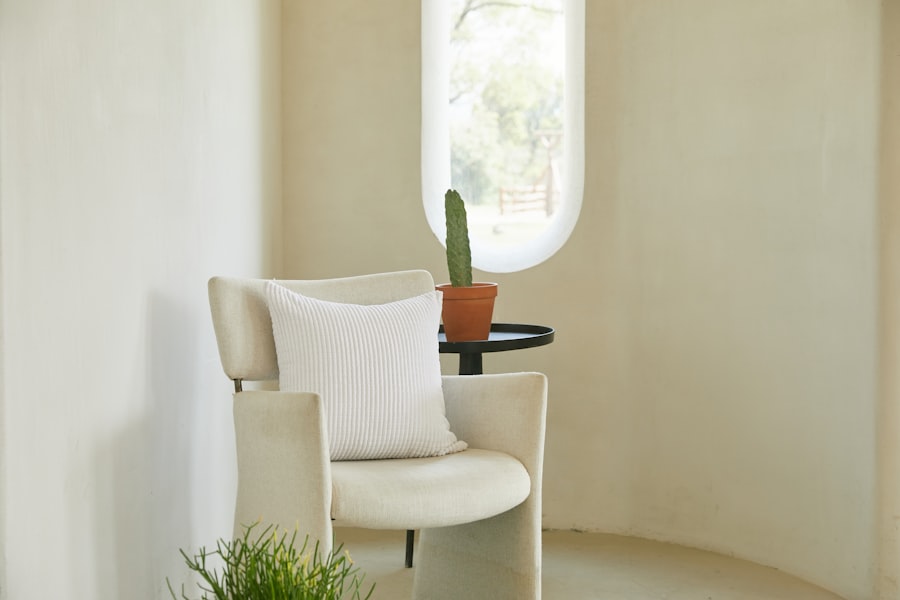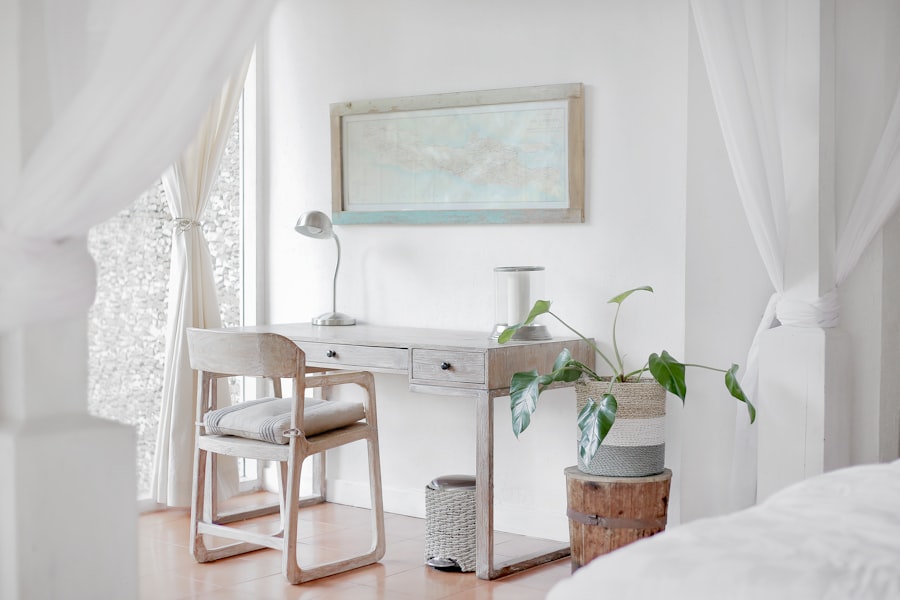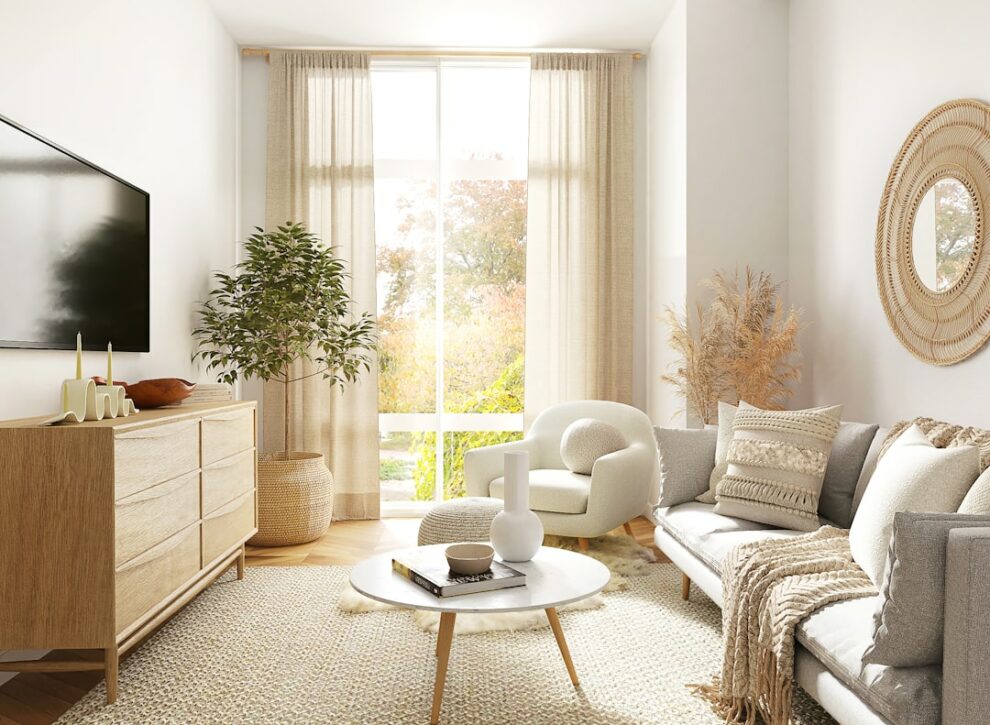As I delve into the world of Taoism, I find myself captivated by its profound principles that emphasize harmony, balance, and the interconnectedness of all things. Originating in ancient China, Taoism offers a philosophical framework that encourages individuals to align themselves with the natural flow of the universe. The core tenet of Taoism is the concept of the “Tao,” or “the Way,” which represents the fundamental nature of the universe and the path one should follow to achieve a fulfilling life.
This philosophy resonates deeply with me, as it invites a sense of peace and understanding in a world often filled with chaos and uncertainty. Taoist principles extend beyond mere philosophy; they permeate various aspects of life, including art, health, and, notably, interior design. By embracing these principles, I can create spaces that not only reflect my personal style but also promote a sense of tranquility and balance.
The integration of Taoist ideas into interior design allows me to cultivate environments that foster well-being and harmony, encouraging a deeper connection with both my surroundings and myself. As I explore the relationship between Taoism and design, I am continually inspired by the potential for creating spaces that resonate with the essence of life itself.
Key Takeaways
- Taoist principles emphasize harmony, balance, and natural elements in interior design.
- Incorporating natural elements and following Feng Shui principles can create a harmonious and balanced living space.
- Minimalism and simplicity are key aspects of Taoist-inspired interior design, promoting a sense of calm and tranquility.
- Embracing imperfection and the concept of Wabi-Sabi adds character and warmth to interior spaces.
- Creating flow and movement in interior spaces can enhance the sense of tranquility and mindfulness in daily living.
Harmony and Balance in Interior Design
In my journey through interior design, I have come to appreciate the significance of harmony and balance as foundational elements. These concepts are deeply rooted in Taoist philosophy, which teaches that everything in the universe is interconnected and that achieving equilibrium is essential for a fulfilling existence. When I approach a space, I strive to create an environment where colors, textures, and forms work together seamlessly, evoking a sense of calm and serenity.
This pursuit of balance is not merely aesthetic; it reflects a deeper understanding of how our surroundings can influence our emotions and well-being. To achieve harmony in my designs, I often consider the principles of yin and yang, which represent opposing forces that are interconnected and interdependent. For instance, I might juxtapose soft, flowing lines with more rigid geometric shapes to create visual interest while maintaining equilibrium.
Additionally, I pay close attention to color palettes, opting for soothing hues that promote relaxation and comfort. By thoughtfully arranging furniture and decor, I can guide the flow of energy within a space, ensuring that it feels inviting and balanced. Ultimately, my goal is to create interiors that resonate with the principles of Taoism, fostering a sense of peace and harmony for those who inhabit them.
Natural Elements and Feng Shui

As I explore the integration of natural elements into my interior design practice, I am continually reminded of the importance of connecting with nature. In Taoism, nature is revered as a source of wisdom and inspiration, and this belief is echoed in the principles of Feng Shui. This ancient Chinese practice emphasizes the arrangement of space to promote positive energy flow, or “chi.” By incorporating natural elements such as plants, water features, and organic materials into my designs, I can create environments that not only look beautiful but also enhance well-being.
In my designs, I often use plants as a way to bring life and vitality into a space. The presence of greenery not only purifies the air but also fosters a sense of connection to the natural world. I find that incorporating water elements—such as fountains or aquariums—can create a soothing ambiance while promoting tranquility.
Additionally, I pay attention to the materials I choose; opting for wood, stone, and other organic materials helps to ground a space in nature. By embracing these natural elements, I can create interiors that resonate with the principles of Feng Shui, allowing for a harmonious flow of energy that nurtures both body and spirit.
Minimalism and Simplicity
| Aspect | Metric |
|---|---|
| Minimalism | Number of items owned |
| Minimalism | Amount of clutter in living space |
| Simplicity | Number of daily tasks |
| Simplicity | Amount of time spent on digital devices |
In my quest for creating serene spaces, I have discovered the beauty of minimalism and simplicity as guiding principles. These concepts align closely with Taoist philosophy, which encourages individuals to let go of excess and focus on what truly matters. By embracing minimalism in my designs, I can cultivate environments that are uncluttered and peaceful, allowing for greater clarity and mindfulness in daily life.
When designing a space with minimalism in mind, I prioritize functionality and intentionality. Each piece of furniture or decor is chosen with care, ensuring that it serves a purpose while contributing to the overall aesthetic. I find that by reducing visual clutter, I can create an atmosphere that promotes relaxation and introspection.
This simplicity extends beyond physical objects; it also influences color schemes and spatial arrangements. Soft neutrals and open layouts allow for a sense of spaciousness that invites calmness into the home. Ultimately, my goal is to create spaces that reflect the essence of minimalism—where less truly becomes more.
Embracing Imperfection and Wabi-Sabi
As I continue to explore the intersection of Taoism and design, I am drawn to the concept of wabi-sabi—the Japanese aesthetic that celebrates imperfection and transience. This philosophy resonates deeply with me as it encourages an appreciation for the beauty found in flaws and the passage of time. In a world that often prioritizes perfection and uniformity, embracing wabi-sabi allows me to create spaces that feel authentic and lived-in.
Incorporating wabi-sabi into my designs means celebrating natural materials with their unique textures and imperfections. For instance, I might choose reclaimed wood with visible knots or stones with irregular shapes to add character to a space. This approach not only enhances visual interest but also tells a story about the materials themselves.
Additionally, I find beauty in asymmetry—arranging decor in a way that feels organic rather than overly curated. By embracing imperfection, I can create interiors that evoke warmth and authenticity, inviting individuals to connect with their surroundings on a deeper level.
Flow and Movement in Interior Spaces

Navigating Spaces with Ease
When designing spaces, I pay close attention to how individuals will navigate through them. I ensure that pathways are clear and intuitive, allowing people to move effortlessly from one area to another.
Open Layouts and Seamless Transitions
I often incorporate open layouts that allow for seamless transitions between different areas. This approach not only enhances functionality but also fosters a sense of connection between spaces. By considering how furniture placement can influence movement, I arrange seating areas to encourage conversation while maintaining an open flow, creating an inviting atmosphere.
Cultivating Harmonious Environments
By prioritizing flow in my designs, I can cultivate environments that feel harmonious and balanced – reflecting the principles of Taoism while enhancing daily living experiences.
Mindful Living and Tranquility
In my pursuit of creating tranquil spaces, I have come to understand the importance of mindful living—a practice deeply rooted in Taoist philosophy. Mindfulness encourages me to be present in each moment, fostering a deeper connection with my surroundings. By incorporating this principle into my interior design practice, I can create environments that promote relaxation and introspection.
To cultivate mindfulness within a space, I often incorporate areas designated for reflection or meditation. These quiet corners may feature comfortable seating, soft lighting, or calming decor—inviting individuals to pause and reconnect with themselves amidst their busy lives. Additionally, I find that incorporating sensory elements—such as soothing scents or gentle sounds—can enhance the overall atmosphere of tranquility.
By designing spaces that encourage mindful living, I can help individuals cultivate a sense of peace and presence in their daily routines.
Incorporating Taoist Symbols and Artifacts
As I explore ways to infuse my designs with deeper meaning, I am drawn to the incorporation of Taoist symbols and artifacts. These elements serve as powerful reminders of the principles I hold dear—encouraging reflection on life’s interconnectedness and the pursuit of harmony. From yin-yang motifs to representations of nature’s cycles, these symbols can enhance both aesthetic appeal and spiritual significance within a space.
In my designs, I often include artwork or decor that reflects Taoist themes—such as paintings depicting serene landscapes or sculptures inspired by natural forms. These pieces not only add visual interest but also invite contemplation on the beauty of existence. Additionally, incorporating artifacts such as incense holders or meditation cushions can create dedicated spaces for mindfulness practices—encouraging individuals to engage with their surroundings on a deeper level.
By thoughtfully integrating Taoist symbols into my designs, I can create interiors that resonate with meaning while fostering a sense of connection to both self and nature. In conclusion, my exploration of Taoist principles has profoundly influenced my approach to interior design. By embracing concepts such as harmony, balance, minimalism, wabi-sabi, flow, mindfulness, and meaningful symbols, I can create spaces that nurture well-being and foster tranquility.
As I continue on this journey, I remain inspired by the potential for design to reflect the essence of life itself—a harmonious dance between nature, self-expression, and interconnectedness.
If you are interested in exploring the concept of self-discipline further, you may want to check out this article on The Science of Self-Discipline. This article delves into the psychology behind self-discipline and offers practical tips for cultivating this important trait. By incorporating the principles discussed in this article into your daily life, you can enhance your ability to stay focused and achieve your goals.
FAQs
What are Taoist concepts in interior design?
Taoist concepts in interior design focus on creating harmony, balance, and a connection to nature within the living space. This includes using natural materials, incorporating feng shui principles, and creating a sense of flow and tranquility.
How can Taoist concepts be applied to modern interior design?
Taoist concepts can be applied to modern interior design by incorporating elements such as natural light, organic materials, minimalist design, and a focus on creating a peaceful and balanced environment. This can be achieved through the use of natural colors, sustainable materials, and a mindful approach to space planning.
What are some key principles of Taoist interior design?
Key principles of Taoist interior design include simplicity, naturalness, and the integration of the five elements (wood, fire, earth, metal, and water). It also emphasizes the importance of creating a harmonious and balanced environment that promotes well-being and tranquility.
How does Taoist interior design differ from other design philosophies?
Taoist interior design differs from other design philosophies in its emphasis on creating a connection to nature, promoting balance and harmony, and incorporating feng shui principles. It also focuses on the idea of “wu wei,” or effortless action, which encourages a natural and unforced approach to design.
What are some practical tips for applying Taoist concepts to interior design?
Practical tips for applying Taoist concepts to interior design include using natural materials such as wood, stone, and bamboo, incorporating elements of nature such as plants and water features, and creating a sense of openness and flow within the space. Additionally, paying attention to the placement of furniture and the use of natural light can help create a harmonious environment.













Add Comment